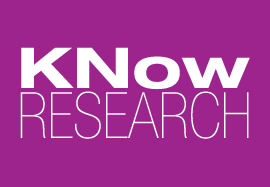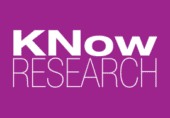KNow Your Customer Better (With a Little Help From Qual)
Recently, our friends at Loyalty360 asked us to help unpack the benefits of qualitative techniques in understanding customer loyalty and satisfaction. We talked about the most beneficial qualitative techniques for brands to incorporate to understand and increase customer satisfaction.
Download our co-authored white paper on the 7 Brand Loyalty Drivers HERE.
Loyalty360: What are the various types of data gathering?
KNow: The numbers of ways companies can access and gather data seem to grow exponentially every year. Information can be gathered actively (through surveys, market research, panels, communities, ad testing, biometrics, tracking studies, etc.) and passively (via tools like data analytics, social media monitoring etc.). Companies should strive for a healthy balance of data they can collect passively and insights they want to reach out and learn proactively about. This second category is the home of both quantitative and qualitative insights. Quantitative research is used to quantify attitudes, opinions, behaviors and patterns with results that are projectable to the population/segment/target market in question. Qualitative research is used to answer the ‘why’s’ and gain depth of understanding about that population/segment/target population. It’s how companies can uncover the reasons behind, beliefs about and motivations for behaviors, needs and preferences.
L: What specifically are qualitative techniques and why are they important for brands to understand?
K: Some of the most commonly used qualitative methodologies are: focus groups/triads/dyads, individual interviews (IDI’s), ethnographies, shop-along interviews, intercepts, diary studies, communities/forums and co-creation sessions. These days all of these techniques can be facilitated in-person or digitally thanks to the wide array of technological tools today’s market research professional has in her toolbox.
All of these techniques have a three-fold purpose: (1) make the research participant feel comfortable, safe and heard so they can share freely, (2) give the researcher the data she needs to complete her analysis and the artifacts to bring that analysis to life and (3) give the client actionable insights directly correlated to their project objectives.
It’s important for brands and researchers to keep the wide array of tools and techniques in mind so that they can custom design each project with the best methodology(s) for the task at hand. This is especially important when a project has budgetary and timing constraints!
L: What are the best qualitative techniques to use when determining customer satisfaction?
K: Often initial customer satisfaction ratings come from a quantitative approach (e.g. a post-purchase survey or brand tracker). However, those numbers only tell part of the story. Qualitative research uncovers the reasons behind those scores; customers’ table-stakes, pain points, barriers, and surprise-and-delight moments that influence their satisfaction and ultimately, their loyalty.
The ‘best’ technique depends to some degree on the industry/product/service in question. For instance, for retail products, it can be best to go into the retail environment to see what’s working at the point of purchase via shop along interviews or intercepts. On the other hand, if the product is used in the home, an in-home ethnographic interview might be the best choice so that the product can be observed in use, in situ. If you are looking into satisfaction of a service, often remote interviews (via webcam or phone) can be most appropriate. If you’d like to track an experience over time to see where satisfaction is highest and lowest and explore why, online bulletin boards or digital diaries are great solutions.
Good ways to keep all your options in mind: (1) track the techniques and tools used on each project, (2) have a ‘postmortem’ call with your team after each project to discuss what worked and what didn’t (3) stay close to your partners, vendors and suppliers who attend industry events and stay abreast of industry news so that you can tap into their knowledge of what’s new out there.
Don’t forget that the best approach can often be a hybrid one, combining more than one methodology to achieve the desired research outcome!
L: What are the gaps in understanding if brands don’t use this type of analysis?
K: Qualitative can have a reputation of being cumbersome, expensive and time consuming, but we caution companies to not leave it behind! Instead, we urge them to find ways to fit into their learning process by thinking creatively and making it efficient and effective so that they don’t lose the richness of understanding that comes from qualitative exploration. Often customers are emotionally tied to specific brands because of the way they make them feel or the trust they’ve developed with those brands. Asking qualitative questions that draw out deeper consideration and emotion helps brands discover what they can do to continue, increase, promote or even repair their relationship with their B2C and/or B2B customers. The act of asking these types of open-ended, probing and/or laddering questions can confirm hypothesizes, spark new ideas or inspire a whole new approach/product/innovation.
L: How can brands shift their research and start getting a better understanding of their customers using qualitative research methods?
K: We definitely recommend starting small; try adding a qualitative component to your next study. The next time you receive a set of quantitative data, look at it through the lens of what you want to know more/better about based on those results. Is there a data point that seems disconnected from the rest of the results? Did something change since the last time you did this study? Is there a segment that’s behaving differently from the others or from how you’re used to them behaving? Dive in! This can be as simple as conducting a round of interviews to complement that survey.
You’ll reap the benefits of conducting a round of qualitative conversations in a few ways: (1) photos, quotes and verbatims in text or, even better video, to back up the data and bring the analysis/report to life, (2) the ability uncover and answer the ‘why’ behind the data, and (3) inspiration from your customers’ stories and start thinking about solutions and improvements.
Check out the original article here and start getting to know your customer better: https://loyalty360.org/loyalty-management/article/know-your-customer-better

